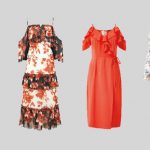Looking for love? The history of dating – and secrets to find The One
 GETTY
GETTY
‘Social class was hugely influential when it came to dating’
As a single woman, Nichi Hodgson was rigorous in her research for her new book. “I went on five dates a week and wrote for five days a week,” she says. “I learned three things: don’t hide who you are, don’t be too accommodating and be fully invested through all the stages, no exception. I started writing the book as a single woman and then I learned some things along the way. I also found myself a boyfriend through a dating app.” The book traces dating from the 18th century to the present day, and sheds light on how women’s position in society has changed.
Don’t hide who you are, don’t be too accommodating and be fully invested through all the stages
Nichi says it was the 1700s that saw women beginning to be treated as if they had minds and opinions of their own. Physical beauty became less important and men were more interested in a well-read woman who could dance. “Similar to Jane Austen’s characters, social class was hugely influential when it came to dating,” Nichi adds. “And money gave you more opportunity to meet people. Parents saved up so their daughters could be launched on a social season in London. You would never be left alone with a man and could only touch through gloved hands. If you were a labourer, you married someone off the street. Even at that time, people also responded to lonely hearts adverts in the papers.” Women’s rights were limited until 1870 when the Married Women’s Property Act came in. Up until then, their husbands owned everything including their inheritance and children. This meant finding a man with “a good character” was incredibly important. “Industrialisation in the Victorian era resulted in fun dates,” adds Nichi. “The invention of the railway meant people could go on days out. Bikes meant you could go on romantic moonlight cycles. And the post allowed the sending of Valentine’s Day cards. As technology progressed, the invention of the telephone and the beginning of women’s rights created more freedom. “Queen Victoria, who was obsessed with Prince Albert, proposed to him on the leap year, which is now a modern-day tradition. Her openness about their love made it acceptable for the nation to do the same. People started to believe romance was an important part of marriage.” ‘Finding a man with “a good character” was incredibly important’ With contraception available from the 1870s, Edwardian couples would go on holiday together and women used to visit the seaside to meet men. “However, if someone found out, your honour would be in tatters,” says Nichi. This all changed in the First World War when women no longer had chaperones and found themselves doing traditionally men’s jobs. With this came a whole new freedom. Nichi says: “Khaki fever swept the nation, with women becoming obsessed with men in uniform, and this became a national scandal. Gangs of women who had authority from the police would drag people out of bushes and cinemas. People’s attitudes changed because they didn’t know if their partners would come back. So women would write to multiple men until one came back alive at the end of the war. “By the 1920s, so many men were killed that women started to have relationships with other women and lived in lodgings together. It was the jazz age and nightclubs sprang up as a result of a liquor licensing ban on music halls. Tinder is one of the most popular online dating apps The clubs were free for all and women’s pace of life stepped up, now working all day and partying all night. Cocaine became very popular, too.” Nichi says by the 1930s, the gossip column had been invented and people tried to mimic celebrity couples. She adds: “If they were single, desperate and middle-class, women would go to India to find a British solider – they were called the Fishing Fleet. It was also the era when the first marriage dating agency began.” During the Second World War, US soldiers and merchant sailors from the East were posted to the UK. “Sex was everywhere, even in air-raid shelters,” says Nichi. “The Government tried to cover it up.” By the 1950s, expectations were for women to revert to pre-war times. In an era when people wanted more certainty from life, marriage rates increased and steady dating became more popular. When the contraceptive pill was introduced in 1961, the take-up by GPs was slow and it was mainly described to older mothers who didn’t want any more children. The 60s also saw package holidays becoming popular, so people had more holiday flings. By the 70s, the pill was available to all, there was more sexual freedom and more sex-based literature, such as The Joy Of Sex. People had more disposable income. Women started to go to pubs with friends and people started meeting in bars. You could buy alcohol and take it home, which contributed to the fashion for dinner parties. “A lot of couples met this way,” says Nichi. By the 80s, marriage was on the decrease and women became more style-obsessed. With an emphasis on looks and Jane Fonda-style exercise regimes, this generation wanted it all. But when it comes to the best era for dating, Nichi says it was the 90s. “It was the best time because people had a modern mind-set. Laws on sexuality were relaxed, while people had disposable income again and had worked through the recession and AIDS. They could start to really think about compatibility in a partner. “Women’s rights had settled and women knew their role in society. They didn’t take it for granted that they would get married. People stayed single for longer and got married later.” So what does Nichi think of dating today? “The paradox of choice, with apps such as Tinder and internet dating, is stopping us from being able to commit to one person and work through the hardships of a relationship because it is so easy to get someone else. There is a backlash to online dating, with an increase now in matchmaking and event-based meetings. “Less and less people are getting married. When marriage laws first came into place in the 1600s, the average life expectancy was 45, so couples would only be married for 20 years. Now you sign up for 60 years and people change a lot in that time.” So with all of Nichi’s historical research, is there a secret formula to finding love? “Stop looking for someone who will tick every box – it’s unrealistic. A hundred years ago, friends and family provided the other qualities that your partner couldn’t.” Nichi’s book The Curious History Of Dating: From Jane Austen To Tinder (Robinson, £12.99) is out now. To order, see Express Bookshop at expressbookshop.co.uk.
 GETTY
GETTY GETTY
GETTY
You may be interested

There’s a reason Metaphor: ReFantanzio’s battle music sounds as cool as it does
admin - Dec 25, 2024[ad_1] Metaphor: ReFantanzio is one of 2024’s best games racking up a stack of Game Awards including best RPG, best…

Music producer who worked with Ringo Starr, Barbra Streisand and Rod Stewart dies
admin - Dec 25, 2024[ad_1] Richard Perry, a hitmaking record producer who worked with Carly Simon, Rod Stewart, Ringo Starr and the Beatles, has…

All of Canoo’s employees are reportedly on a ‘mandatory unpaid break’
admin - Dec 22, 2024[ad_1] Days after furloughing dozens of its employees without pay, EV startup Canoo told the remainder of its staff they…
Leave a Comment
You must be logged in to post a comment.



























